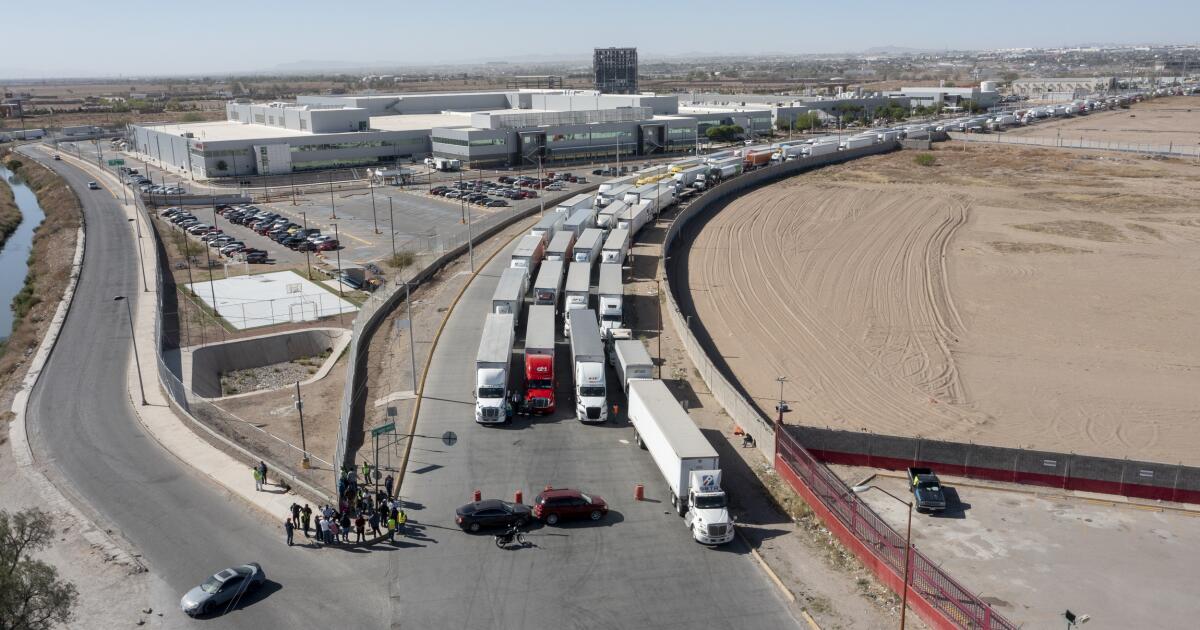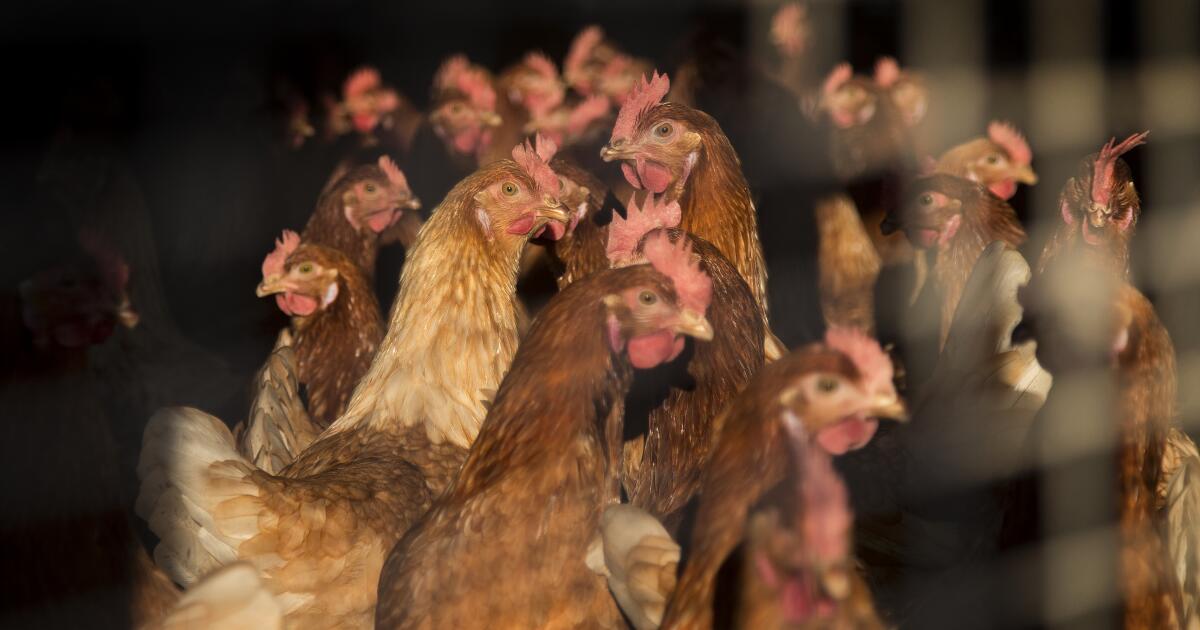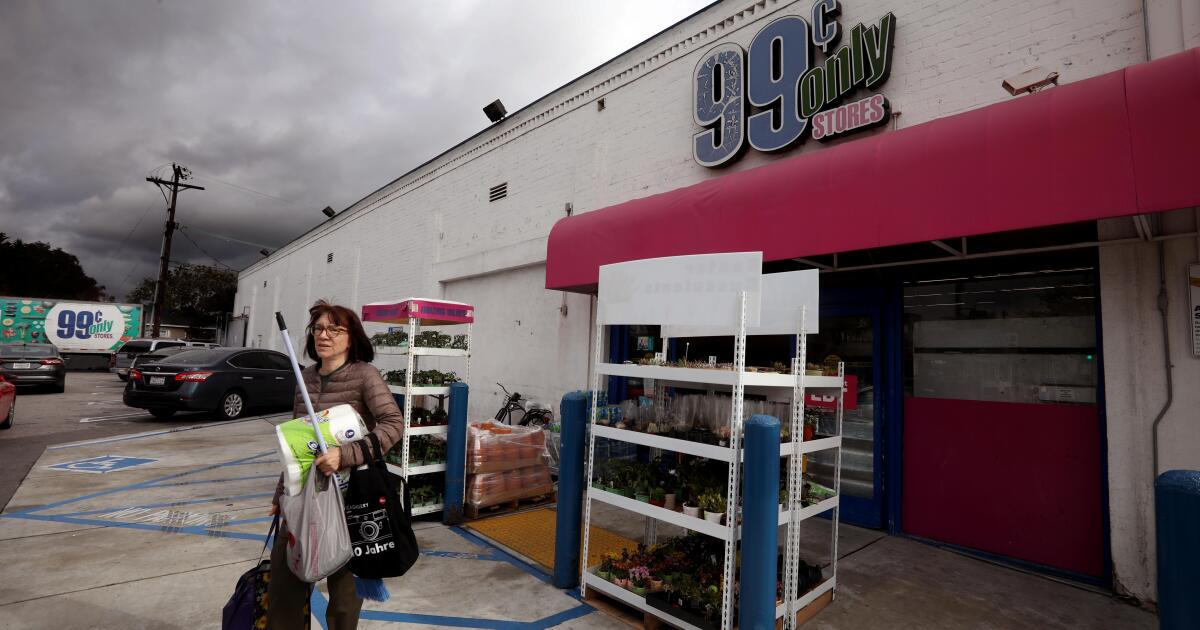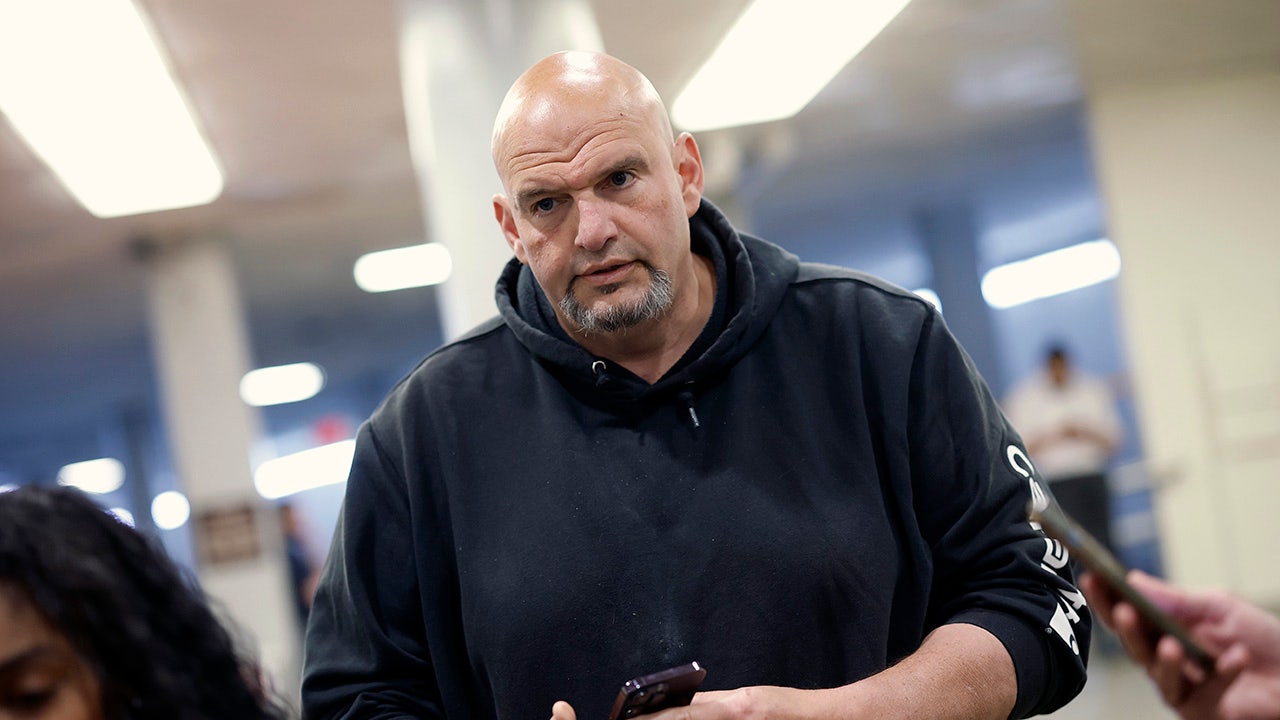Business
Shift in China-U.S. trade is hurting California, helping Texas

As if it weren’t worrisome enough for California that more highly skilled, highly paid workers have been leaving for Texas, evidence shows that the Lone Star State has begun to siphon trade dollars and uncounted jobs away from the Southland’s ports and the distribution hubs in the Inland Empire.
And the apparent cause of the new wrinkle in the Texas-California rivalry is not some new policies or programs adopted in Texas to make it a greater magnet for economic activity that was previously in California. Instead, it’s a consequence of the U.S.-China trade war that began when Donald Trump occupied the White House and has continued with President Biden’s efforts to reduce American dependence on China, especially for high-tech products that involve national security and other issues.
To get around the U.S. tariffs and trade restrictions, Chinese companies have sharply stepped up investments into Mexico and been moving products into the United States by truck instead of shipping by sea through the massive port and distribution systems in Southern California.
The ports of Los Angeles and Long Beach are the busiest in the nation and handle about 40% of all ocean cargo from Asia. But last year the number of 20-foot-equivalent containers from China entering the San Pedro ports complex fell a combined 12.5% from 2022, to the lowest level in at least a decade, according to data from S&P Global Market Intelligence.
“If we’re doing less business, it means fewer jobs, quite simply,” said Gene Seroka, executive director of the Port of Los Angeles. He said that every four containers translate into one job. “Economically, where all of us spend our money, if we don’t have this cargo coming through, it will be less — and there will be choices to be made.”
China’s share of all containers entering the Port of L.A. still remains dominant, at 53% last year, although that’s down from 57% in 2022. Seroka sees that percentage slipping to the mid-40s in the coming years.
The Southland’s cargo volume, overall, has picked up significantly in recent months, thanks to the end of labor contract talks and diversions to the West Coast due to military conflict and drought disrupting the Suez and Panama canals, respectively.
But longer term, Seroka said a dwindling of Chinese inbound containers has to be made up elsewhere. In addition to some 15,000 longshoremen, the two ports support hundreds of thousands of jobs in the region — in trucking, warehousing, trade finances and countless small businesses.
California’s stringent environmental regulations and high business costs add to the pressure.
To be sure, increased Mexican imports also benefit Southern California, which historically has gotten a large volume of overland trade, particularly electronic products coming up the San Diego border. But the biggest entry point for Mexican goods is Laredo, Texas, just north of the big manufacturing center in Monterrey, Mexico, and then El Paso, close to Juarez.
“Since more and more goods are coming from Mexico, Texas is geographically and conveniently located,” said Sung Won Sohn, an economics professor at Loyola Marymount University.
Tom Fullerton, a border business economist at the University of Texas in El Paso, said a lot of things made in Mexico are intermediate components, many of which go back and forth across the border as many as a dozen times. Some 90% is transported by trucks. No wonder employment for truck drivers in Texas has been growing nonstop, while California’s has come to a screeching halt, according to the U.S. Bureau of Labor Statistics.
“Increased Chinese investment simply creates more business opportunities for firms in Texas,” Fullerton said.
At the moment, trade economies in both Texas and California face some head winds, including a slowing U.S. economy as a result of anti-inflation efforts, plus cutbacks by retailers and other buyers that overstocked merchandise even as American consumers have been shifting their spending from stuff to services, such as travel and entertainment.
“Now that we filled the house with everything, everything we could wear and use for years, they’re saying, ‘Let’s go to the movies, the ballgame,’” said Jock O’Connell, a California trade specialist at Beacon Economics. “U.S. demand for imported goods from anywhere is slacking.”
Last year U.S. imports of all merchandise from China, by ship and air, fell by a whopping 20% from 2022, to $427 billion. The Commerce Department reported Thursday that Chinese imports in January were up slightly from December, but down 6% from January 2023.
Meantime, U.S. imports from Mexico continued to rise in January and compared with a year earlier, extending the lead over China. Mexican imports jumped after the worst of the pandemic passed and reached $476 billion last year. It was the first time in more than two decades that Americans bought more merchandise from Mexico than China.
Overall, the U.S. trade deficit of all goods and services fell last year by almost 19%, the largest drop since 2009, as Americans bought less foreign oil and fewer China-made phones, toys and household goods. In January, the trade deficit increased, to $89 billion, as American exports were lower than December and year-earlier figures.
Efforts to diversify production away from China have been going on for years, in part as a hedge against political risks and rising labor and business costs in China. But the move to Mexico and some other nations gained speed after then-President Trump in 2018 slapped large tariffs on a wide array of Chinese imports.
President Biden hasn’t lifted them, and in some ways further tightened the trade screws on China. The pandemic added to the so-called reshoring or near-shoring momentum as multinationals, stung by a breakdown in transport and supply chains, sought to be closer to their markets.
Harry Moser, founder of the Reshoring Initiative to bring manufacturing back to the U.S., said the changes in trade volume by country don’t tell the full story. Although he called the drop in the American trade deficit with China last year a good thing, Moser questioned whether the U.S. is really less dependent on China.
What’s happening, he argued, is that there’s considerable rerouting of trade from China through Mexico. And he fears it could get worse, pointing to the Chinese firm BYD’s plans to build an electric vehicle factory in Mexico for export to the U.S. Even Tesla, which makes its cars in Shanghai as well as Texas, is apparently urging some of its Chinese suppliers to locate in Mexico, he said.
“It’s not time to celebrate the China news,” Moser said of the reported drop in Chinese imports to the U.S.
Apparently there’s no cause to celebrate in the Southland either.
Chinese automotive parts companies have been among the most aggressive in stepping up investments in Mexico. Thirty-three car parts suppliers of Chinese origin are now registered in Mexico, and 18 exported $1.1 billion worth of products to the U.S. last year, up 15% from 2022, said Michelle Sagrero, communications manager at INA, the auto parts industry association in Mexico. She said more Chinese investments are in the works, though she said it was too early to disclose how many companies.
Overall, Chinese foreign direct investment, while stalling in the U.S., has kept growing in Mexico and topped $2.5 billion in 2022, a fivefold increase from 2000-04, according to Red ALC-China, a nonpartisan network of academics in Mexico and other countries. The tally for Chinese investments in 2023 hasn’t been published yet, but “it’ll be substantially higher,” said Enrique Dussel Peters, coordinator for the Center for Chinese-Mexican Studies at UNAM, a university in Mexico City.
The U.S.-China trade war has undoubtedly played a big role, he said. In his study for a United Nations economic group, Dussel Peters found that in 2021, companies exporting goods from China to the U.S. paid 18.8% of the value of their shipment in tariffs and transportation costs. The comparable costs for Mexico-originated exports to the U.S. — 1.05%.
“The difference is substantial, to put it politely,” he said.
Dussel Peters said he expects more Chinese and other foreign companies to invest and set up shop in Mexico. Mexico has free trade pacts not only with the U.S. but also a few dozen other nations, and it has its own sizable domestic market too. But he noted that there is one potential hitch. Thus far, Washington hasn’t come down hard in pressuring Mexico to follow the U.S. on China trade and investments.
“There is always the threat that the U.S. becomes more serious about complying with U.S. regulations and restrictions,” Dussel Peters said. “You can’t continue with a trade war and profound conflict and have a major partner of the U.S. with a sign saying to the Chinese, ‘Welcome to Mexico.’”

Business
Federal labor investigators say L.A. poultry plant used child labor and tried to cover it up

A federal judge issued a temporary restraining order on Monday to block a poultry processing plant in the city of Irwindale from using “oppressive” child labor.
The order came after investigators with the U.S. Department of Labor filed a lawsuit on Saturday alleging the poultry processor and its affiliated companies illegally employed children under the age of 18 to debone raw meat with sharp knives.
The department is seeking action forcing involved companies to forfeit money they made from selling products processed in facilities where minors were allegedly made to work in dangerous conditions.
The judge’s order involves three companies in the San Gabriel Valley — L & Y Food, Moon Poultry and JRC Culinary Group — that are all either owned, operated or managed by Fu Qian Chen Lu, who is also named in the lawsuit.
The Labor Department said in court documents that the companies continued to deliver and sell products even after agreeing to voluntarily refrain from shipping products following accusations of their use of child labor, and refused to provide information to investigators.
The companies hid 794 boxes of processed chicken and seven 1500-pound bins of chicken from investigators visiting the Irwindale facility, according to the court filings .
Federal officials and the poultry companies have presented dueling narratives of the child labor allegations.
Gregory W. Patterson, an attorney representing Chen Lu and other defendants named in the suit, accuses the Labor Department of planting an underage worker in the facility as part of its investigation, a claim the department has dismissed as “baseless.”
The crackdown by federal investigators comes as some of the country’s biggest consumer brands have come under broad scrutiny for child labor in their domestic supply chains amid revelations that children are working throughout American manufacturing and food production.
Investigators discovered children deboning poultry at the plant after visiting the facility in the city of Irwindale on Mar. 20 for a civil search warrant, the lawsuit said. Operators of the facility continued to process products, even after the Labor Department raised objections during its search warrant, in violation of federal laws prohibiting sale of products “tainted by child labor,” according to the lawsuit.
The “hot goods” provision of the Fair Labor Standards Act prohibits companies from selling products from locations flagged for child labor use in the prior 30 days.
U.S. District Judge Otis D. Wright II in his Monday decision issued a temporary restraining order requiring the businesses to stop using child labor, provide the Labor Department with information it is requesting related to its investigation, and refrain from shipping any poultry from facilities accused of employing child labor.
“In light of the immediacy of irreparable harm pending the Court’s review of this action, the Court finds a temporary restraining order warranted,” Wright wrote in his order on Monday.
Barring immediate action, he said, companies named in the lawsuit “will continue to employ oppressive child labor to the risk of minors’ life and limb; hot goods may enter the stream of commerce; and Defendants will continue to thwart Plaintiff’s investigation.”
Patterson, the attorney representing Chen Lu and other defendants, said in an emailed statement that the labor department had a 17-year-old “gain employment with Moon Poultry under false pretenses by presenting a fake government identification” and “directed this person to work in a hazardous area of the Moon Poultry facility in Irwindale.”
Patterson alleged that the Labor Department aimed to manufacture a child labor claim to “strengthen its negotiating hand” in an investigation about overtime wages that had not been paid to workers.
“The defense counsel’s allegations are false. The Labor Department has previously responded to the defense counsel on this issue, but he has nevertheless chosen to press his baseless claims,” said Marc Pilotin, regional solicitor for the Labor Department, in an emailed statement.
The Labor Department has investigated other poultry processing plants in California in recent months.
In December, federal investigators found grueling working conditions at two poultry plants in City of Industry and La Puente operated by Exclusive Poultry Inc. as well as other “front companies” owned by Tony Elvis Bran.
Children as young as 14 stood for long hours cutting and deboned poultry and operating heavy machinery, the labor department said. The workers came primarily from Indigenous communities in Guatemala.
The poultry processor, which supplies grocery stores including Ralphs and Aldi, was ordered to pay nearly $3.8 million in fines and back wages.
An investigation published in early February by the Fresno Bee detailed dangerous and sometimes deadly conditions for primarily Latino immigrant workers at Pitman Farms in the Central Valley, which produces the Mary’s Free Range Chicken brand.
Business
Money Talk with Liz Weston: Managing mortgage debt in retirement

Dear Liz: My husband and I are Gen Xers who are renting. We have enough cash from the sale of our last home to make a small down payment on another. If we moved to a more affordable community, we could manage the payments, but it would still be a stretch. That scenario would not have bothered me 10 years ago, but now I’m close to 50. Is it a good idea to take on a mortgage at this point? What is the best way to ensure I can afford to keep the roof over my head when I can no longer work full time?
Answer: Having a mortgage in retirement used to be uncommon, but that’s no longer the case. The Joint Center for Housing Studies of Harvard University found 41% of homeowners 65 and older had a mortgage in 2022, compared with 24% in 1989. Among homeowners 80 and over, the percentage with mortgages rose from 3% to 31%.
The amounts owed have skyrocketed as well. Median mortgage debt for those 65 and older rose more than 400%, from $21,000 to $110,000 (both figures are in 2022 dollars). Median mortgage debt for those 80 and over increased more than 750%, from $9,000 to $79,000.
Mortgage debt doesn’t have to be a crisis if you can afford the home and the payments don’t cause you to run through your retirement savings too quickly. In fact, some retirees are better off hanging on to their loans. It may not make sense to prepay a 3% mortgage when you can earn 5% on a certificate of deposit, for example. Paying off a mortgage early also could leave you “house rich and cash poor,” with not enough savings to deal with emergencies and later-life expenses.
But the key is affordability. A mortgage that’s a stretch now might become easier to afford if your income rises, which was almost a given when you were younger. Now, however, you’re approaching the “dangerous decade” of your 50s, when many people wind up losing their jobs and failing to ever regain their former pay, according to a study by ProPublica and the Urban Institute.
Renting has its risks as well, of course. You aren’t building equity and you typically have little control over rent increases, other than to move.
For help in sorting through your options, consider talking to a fee-only, fiduciary advisor. Among the most affordable options are accredited financial counselors and accredited financial coaches, who typically are well-versed in the money issues facing middle-class Americans. You can get referrals from the Assn. for Financial Counseling & Planning Education at www.afcpe.org.
Dear Liz: I’m a CPA and getting conflicting answers from the Social Security office about a case I’m working on. Both clients are 70 and they’re considering legal separation or divorce. She took Social Security at 62 and receives about $1,500 a month before deductions. He started Social Security at 70 and receives about $4,600. How would her Social Security change at his death or their divorce, if she doesn’t remarry?
Answer: Based on the amounts involved, both parties are receiving their own retirement benefits and those aren’t affected by divorce, said William Reichenstein, a principal at Social Security Solutions, a claiming strategy site. (If the wife were receiving spousal benefits, those would continue after divorce as long as the marriage lasted at least 10 years and she did not remarry.)
If the husband dies and they haven’t divorced, the wife would be entitled to survivor benefits equal to his full monthly benefit amount ($4,600, plus any future cost of living increases). If they divorce and the marriage lasted at least 10 years, she also would be entitled to his full amount. Remarriage wouldn’t affect her divorced survivor benefit since she’s over 60, Reichenstein said.
Liz Weston, Certified Financial Planner®, is a personal finance columnist for NerdWallet. Questions may be sent to her at 3940 Laurel Canyon, No. 238, Studio City, CA 91604, or by using the “Contact” form at asklizweston.com.
Business
99 Cents Only to close all 371 stores and wind down its business

99 Cents Only Stores will close all 371 of its stores and wind down its business operations after more than four decades, the City of Commerce discount chain announced Thursday.
“This was an extremely difficult decision and is not the outcome we expected or hoped to achieve,” interim Chief Executive Mike Simoncic said in a statement. “Unfortunately, the last several years have presented significant and lasting challenges in the retail environment.”
He cited multiple factors, including the “unprecedented impact” of the COVID-19 pandemic, shifting consumer demand, persistent inflationary pressures and rising levels of shrink — an industry term that refers to loss of inventory attributed to reasons such as shoplifting, employee theft and administrative errors.
Combined, those issues “have greatly hindered the company’s ability to operate,” Simoncic said.
99 Cents Only has stores in California, Arizona, Nevada and Texas and has about 14,000 employees. The privately held company said it had reached an agreement with Hilco Global to liquidate all of its merchandise and dispose of fixtures, furnishings and equipment at its stores. Sales are expected to begin Friday.
Hilco Real Estate is managing the sale of the company’s real estate assets, which are owned or leased.
The announcement by 99 Cents Only reflects a larger weakness in the dollar-store category, said Brad Thomas, equity research analyst at KeyBanc Capital Markets.
Dollar Tree, a Chesapeake, Va., retailer, announced last month that it was closing 600 of its Family Dollar stores this year and an additional 370 in the next few years, he noted.
“It’s been trying times for many, many retailers,” he said. “What’s interesting is that what started out as a boon to retailers in the pandemic, with all those stimulus checks, quickly turned into a very troublesome time.”
Rising wages, inflation and higher losses due to shrinkage have reduced profits for retailers in a deep-discount sector where margins are already extremely low.
99 Cents Only, with its large base of California stores, has been under particular wage pressure, he said. And it’s at a disadvantage compared with larger chains such as market leader Dollar General, which has a store count close to 20,000 — “a sales base and a store base that is multiple times larger than 99 Cents,” Thomas said.
Customers make their way through the crowded parking lot at a 99 Cents Only store in Santa Monica on Friday. The chain has locations in California, Arizona, Nevada and Texas and employs about 14,000 people.
(Genaro Molina / Los Angeles Times)
Last week, Bloomberg reported that 99 Cents Only was considering a bankruptcy filing as it contended with a liquidity shortfall.
Founded in Los Angeles in 1982 by David Gold, 99 Cents Only popularized the single-price retail concept. At the time, dollar stores were seen as dumping grounds for undesirable products, but the Gold family made the stores bright and well-organized, with good-quality merchandise including groceries and household supplies.
“It was an instant success,” Howard Gold, one of David Gold’s sons, recalled Friday; he and his three siblings all worked at 99 Cents Only. “People thought it was government-subsidized because they couldn’t believe the prices.”
For years, it remained one of the few true “dollar” stores, with items priced at 99 cents or less or grouped to sell for a total of 99 cents.
That changed in 2008 when, faced with fast-rising inflation, soaring food and fuel prices, and a higher minimum wage, 99 Cents Only announced that it was straying from its long-standing price strategy.
Three years later, the company announced that it had agreed to be sold in a deal valued at about $1.6 billion, as investors eyed dollar stores that had grown in popularity during the Great Recession. In 2013, Howard Gold and the rest of the family management team departed the company.
Today, with stores scattered around Los Angeles County — among them in Hollywood, Silver Lake, Mid-Wilshire, Santa Monica, Thai Town, North Hollywood and Glendale — the closure of 99 Cents Only will leave a number of large vacant properties in prime locations.

A 99 Cents Only store in Huntington Beach on Friday.
(Allen J. Schaben / Los Angeles Times)
“It’s very sad on many levels, and I’ll just leave it at that,” Gold, now retired and living in Studio City, said of the decision to close the chain his father built.
Other major retailers have also announced store closures in the region lately, including REI in Santa Monica, Macy’s in Simi Valley and several Rite Aid locations.
99 Cents Only did not respond to requests for comment.
Nicolas Kolesnikow, a retired teacher who lives in Westchester, said he was shocked to hear the chain was going out of business. He shops at a 99 Cents Only about four blocks from his house several times a week.
“It’s almost like a corner store for me,” said Kolesnikow, 82.
He might stop by and pick up milk if he runs out, and for longer trips will buy household items and produce such as tomatoes, cucumbers and cilantro before visiting a traditional supermarket with a larger selection.
Kolesnikow said he noticed that some products had become much more expensive in the last year, though there were still bargains.
“I found their prices were working their way up to regular prices,” he said, “and there were fewer shoppers.”
-

 Kentucky1 week ago
Kentucky1 week agoKentucky first lady visits Fort Knox schools in honor of Month of the Military Child
-

 World1 week ago
World1 week agoEU leaders weigh Lebanon partnership in response to Middle East crisis
-

 Movie Reviews1 week ago
Movie Reviews1 week agoFilm Review: Challengers – The Knockturnal
-

 World1 week ago
World1 week agoShipping firms plead for UN help amid escalating Middle East conflict
-

 World1 week ago
World1 week agoIranian media says three drones downed after explosions heard in Isfahan
-
News1 week ago
Maryland high school student arrested after authorities discovered a 129-page document detailing school shooting plan, police say | CNN
-

 Politics1 week ago
Politics1 week agoIsrael hits Iran with 'limited' strikes despite White House opposition
-

 News1 week ago
News1 week agoVideo: Kennedy Family Endorses President Biden




/cdn.vox-cdn.com/uploads/chorus_asset/file/24780073/Screen_Shot_2023_07_10_at_12.28.04_PM.png)











